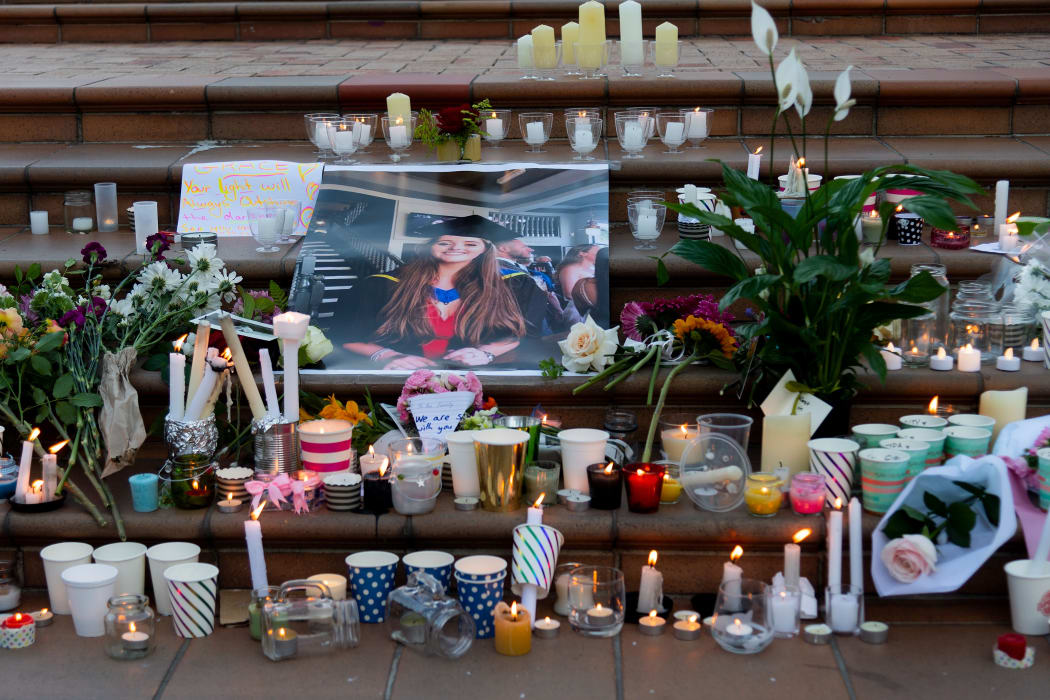By Anna Rawhiti-Connell*
Analysis: The coverage of the trial relating to the killing of Grace Millane has often felt like a revictimisation of Grace but also, a revictimisation of many women.

News coverage of the court case over the death of Grace Millane saw the balance tipped too far and it leaves us with questions about where the line is, commentator Anna Rawhiti-Connell writes. Photo: Supplied / Facebook
The story has become one about our attitudes towards women and sexual freedom and how, while justice must be seen to be done, there is danger in the details once they hit the public arena.
The coverage has felt like a setback in the fight for women to be allowed to live their lives, free of shame and free of danger.
Underneath all the commentary about the nature of the media coverage and court reporting in the 21st century runs a current that speaks to entrenched misogyny, and a growing disquiet about the way this intersects with public discourse about crime against women and the justice system.
Early on in this case, a narrative quickly surfaced that would remind us just how far we have to go in developing a mature and safe discourse about the choices women make.
As news emerged that Ms Millane was last seen with a man she met on Tinder, so too did suggestions that women should be careful, that women should not travel alone, that women, through their choices, are somehow responsible for the foul play that befalls them.
On 9 December 2018, Ms Millane's body was discovered in the Waitākere Ranges and while our tiny nation began to mourn for her, many women also steeled themselves for the wave of condemnation and innuendo that would inevitably arrive as this high profile case played out in public. We mourned Ms Millane but we also mourned for other women who'd died at the hands of men.
Vigils started across the country within a week of the news of her death. Organised by women and extensively covered by media, they were both a reaction to the death of Ms Millane and to suggestions that somehow, it was her own fault.

Vigils such as this one in Wellington were held around New Zealand to honour Grace Millane and to counter any suggestions that her death was somehow her fault. Photo: AFP
Her story became enmeshed in a broader story about violence against women and while great care was taken to ensure the outpouring of love for her family wasn't lost, the case quickly became emblematic of something bigger. At the Auckland vigil, Stuff journalist and MC Alison Mau started the vigil by reading a list of the names of the 13 women who had been killed in New Zealand in 2018.
Victim's life became public property
As the trial began, we were introduced to the 'players' who would feature in the case. Several paragraphs were dedicated to introducing the judge. Media coverage began to have the air of a serialised soap about it and the life of this young woman became public property. Ours to judge, ours to whisper about, ours to watch like some sick reality TV show.
Reporting from the trial came thick and fast. The case became the top story on most news sites and programmes, day after day, night after night. We were able to watch snippets of the CCTV footage that the jury were being shown and at this point, many questioned why? What is the public good being served here? To show us Grace Millane liked a drink? To show us that by kissing this man, she somehow consented to the violence that would end her life?
As the hourly bulletins and push notifications mounted, many people began to express some discomfort and concern about the implications of the graphic sexual detail being reported and the shadows they cast on Ms Millane's character, her choices and the choices of all women. The coverage didn't change, and it didn't let up.
Justice must be seen to be done and the reporting from the trial leaves very little room to argue that we were at a deficit in the fulfilment of this public service. It feels however, that the balance got tipped too far on this case and it leaves us with questions about where the line is.
On their own, the details reported were forensic and cold but aired publicly in such an all-encompassing and unrelenting way, they took on another form. One that was dangerous and volatile. One that fed the idea that somehow, women were at fault and that our sexual freedom and persuasions are what put us in danger.
Just as there are conversations about the defences that can be mounted in these kinds of cases and what is and isn't permissible in court, there also needs to be conversations about how these cases are reported. We live in a world where what is reported can be claimed by people and re-reported as evidence to support their own points of view.
The veil between a justice system in action and a very loud public discourse is gossamer and, if women are to be allowed to stand, safe in their choices, safe in their expression, and safe in the public realm, the need to renegotiate some boundaries is urgent.
Rest in peace Grace.
* Anna Rawhiti-Connell is a digital strategist, columnist and commentator who writes about social media, digital news, politics, diversity and gender equality.





